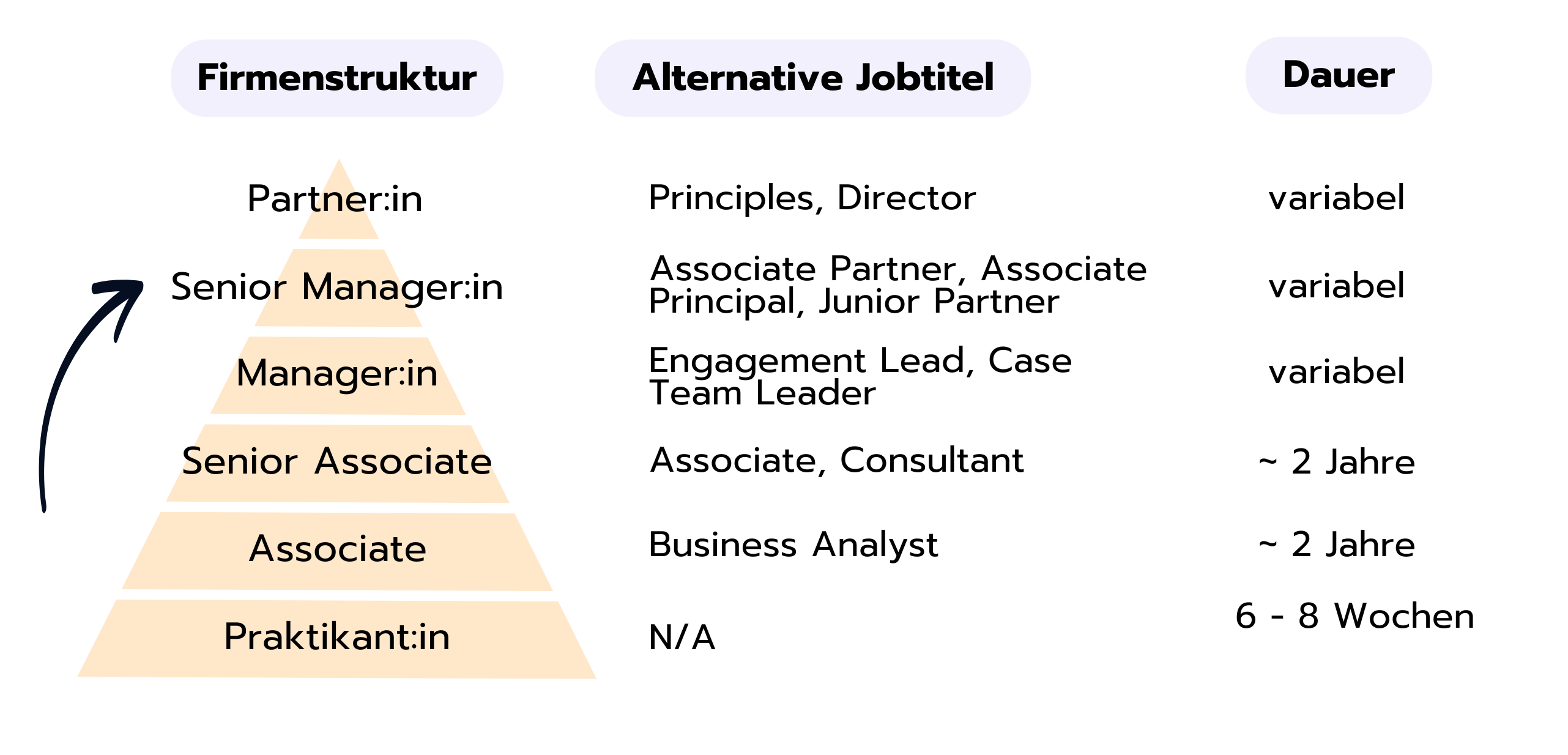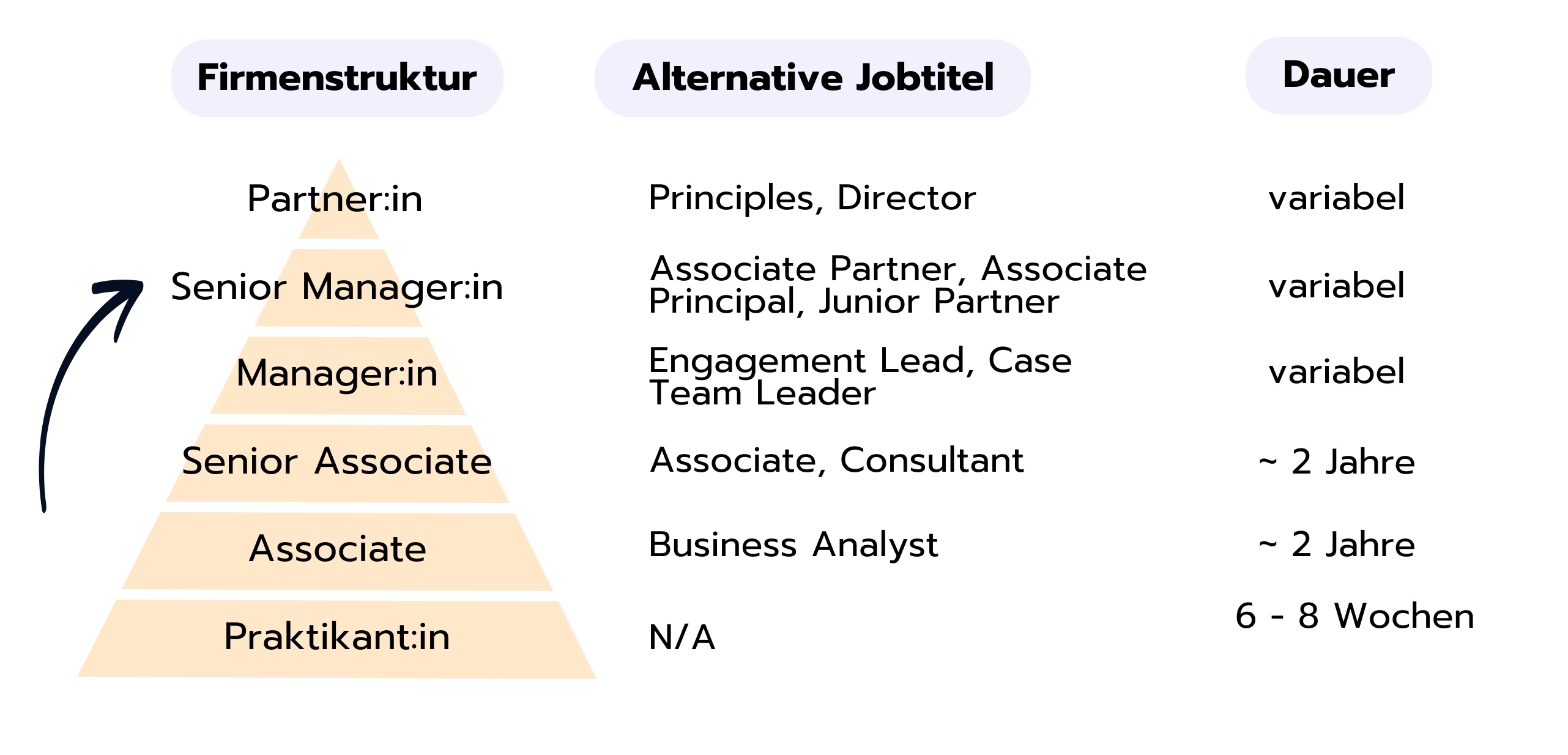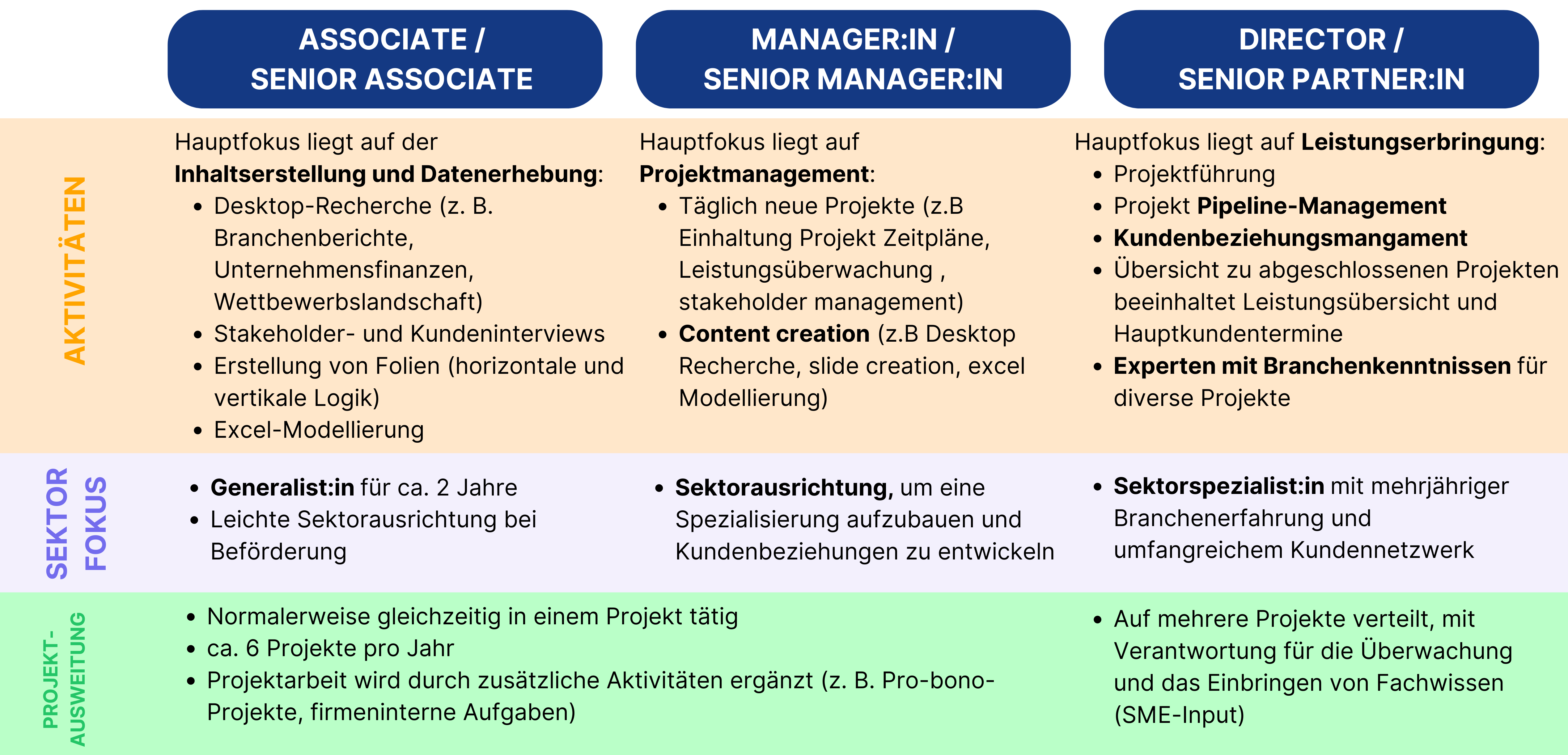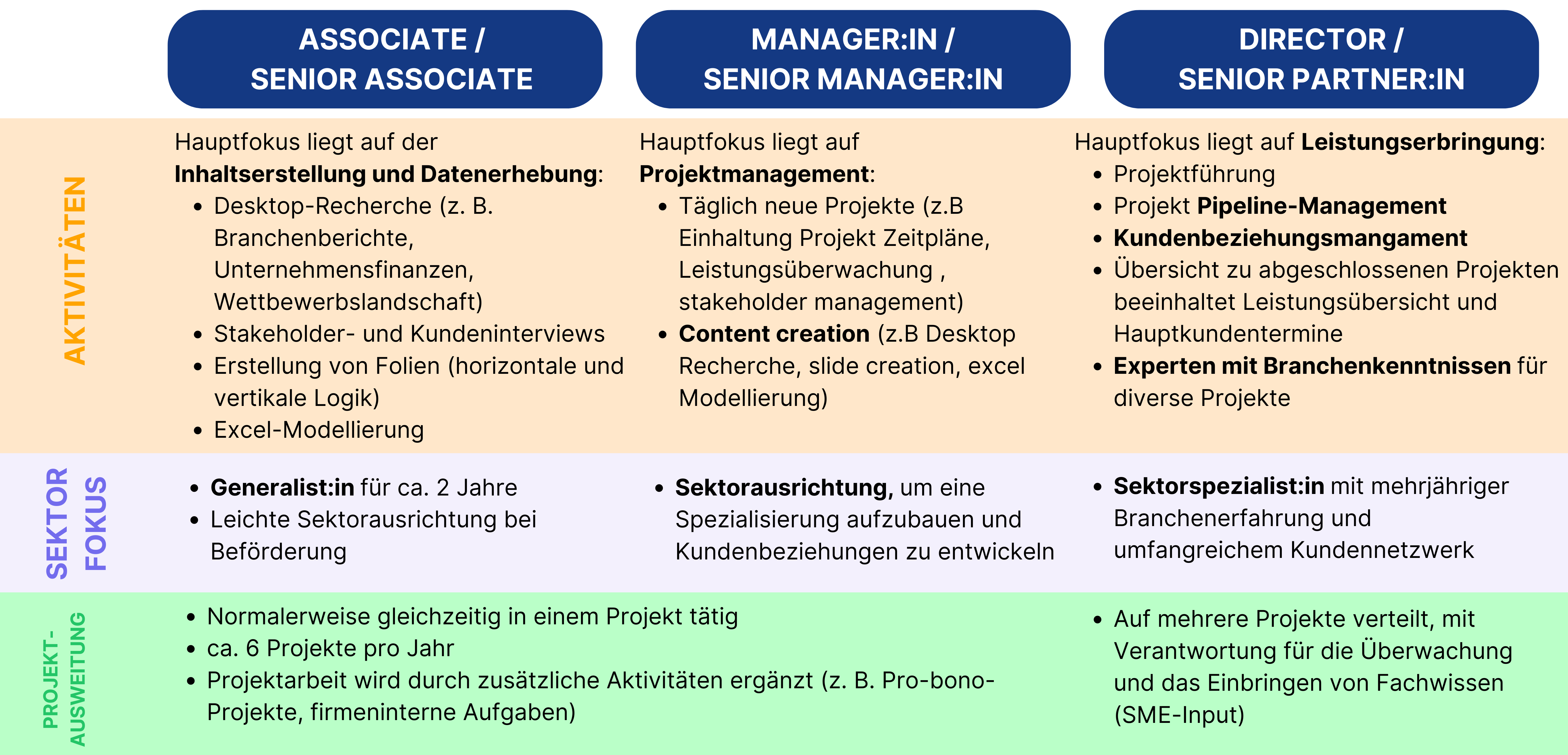Welche Rollen und Verantwortlichkeiten gibt es im Consulting?
Junior-Rollen im Consulting
In den ersten vier Jahren im Consulting musst du in der Regel Inhalte und Analysen liefern. Dies gilt als Schwerstarbeit und ist zu zeitaufwendig für teure Ressourcen. Der erste Teil der Projekte besteht meistens in der Datenerfassung, entweder in Form von Kundeninterviews, Internetrecherchen oder Sichtung von Kundendaten.
In großen Beratungsunternehmen gibt es keine Beschränkung für die Art der von Projekten, an denen Junior-Ressourcen arbeiten können, aber in Boutique-Firmen, die sich spezialisiert haben, kann es naturgemäß sein, dass du dich automatisch spezialisierst. In der Regel wird für höhere Positionen eine größere Spezialisierung und Branchenkenntnis erwartet, sodass Juniors sich spezialisieren müssen, wenn sie befördert werden wollen.
Da Junior Consultants die Daten und Analysen von Projekten zusammenstellen, werden sie in der Regel in Vollzeit an einem einzigen Projekt eingesetzt. Da die durchschnittliche Projektdauer bei Strategy Consultants ca. acht Wochen und bei Management Consultants sechs Monate bis ein Jahr beträgt, bedeutet dies etwa sechs bzw. zwei Projekte pro Jahr.
Management-Positionen im Consulting
Von Consultants auf Management-Ebene wird erwartet, dass sie über ein gutes Maß an Branchenkenntnis und außerordentliche Skills verfügen, um sowohl gute Kundenbeziehungen zu pflegen als auch jüngere Teammitglieder zu managen. Während die Nachwuchskräfte umfangreiche Analysen und Recherchen durchführen müssen, sind Manager:innen für das Gesamtergebnis verantwortlich. Dies bedeutet häufig, dass sie den Junior-Teammitgliedern Hinweise geben müssen, wo sie die richtigen Informationen finden und wie sie die erforderlichen Analysen durchführen können. Außerdem müssen sie die Arbeit der jüngeren Teammitglieder überprüfen und ggf. überarbeiten. Gute Manager:innen arbeiten mit ihren Teammitgliedern zusammen, um deren Arbeit und technische Skills zu verbessern.
Je höher die Position eines Consultants ist, desto mehr hat er oder sie mit Klient:innen zu tun. Eine gute Kundenbeziehung ist für den Consultant immens wichtig, da die Klient:innen häufig über Informationen für die Durchführung der Analyse verfügen, die als Basis für aussagekräftige Schlussfolgerungen dient. Im Tagesgeschäft ist der oder die Projektmanager:in die Person, die mit den Kund:innen interagiert und mit ihnen an dem Projekt arbeitet, weshalb er oder sie in einigen Firmen auch als Engagement Manager bezeichnet wird.
Partner:innen und Direktor:innen in Beratungsunternehmen
An der Spitze der Pyramide konzentriert sich die Aufgabenstellung auf zwei Hauptaufgaben: Umsatzgenerierung und Branchenkenntnis. Unternehmen bezahlen Berater:innen für Spezialkenntnisse und Fachwissen, über die sie selbst intern nicht verfügen. Sie wollen sicher sein, dass das Beratungsunternehmen gute Arbeit leistet und über das Fachwissen und die Kompetenz verfügt, die sie brauchen. Das bedeutet, dass Unternehmen die Arbeit eines Experten kaufen wollen. In einer Beratung ist dies der oder die Partner:in. Partner:innen sind die Sales Force einer Unternehmensberatung und von jedem Einzelnen wird erwartet, dass sie oder er dem Unternehmen Einnahmen beschert. Oft werden Direktor:innen nur dann zu Partner:innen befördert, wenn sie nachweisen können, dass sie dem Unternehmen Einnahmen einbringen, die sonst nicht zustande kämen.
Eine weitere Aufgabe der Senior-Teammitglieder besteht darin, dem Projektteam ihre Branchen- und Beratungskompetenz zur Verfügung zu stellen. Sie verfügen über wertvolle Kenntnisse für die erforderlichen Analysen und Untersuchungen, über die jüngere Teammitglieder nicht verfügen und die sie mit sonstigen Recherchearbeiten nicht finden können. Dieser Einblick und dieses Fachwissen sind für die Kund:innen äußerst wertvoll und werden auch von dem Beratungsunternehmen erwartet.
Die letzte Aufgabe der Partner:innen und Direktor:innen ist die Qualitätssicherung. Sie zeichnen die Ergebnisse und Analysen ab, die an die Kund:innen geschickt werden. Durch diese Prüfung wird sichergestellt, dass der Inhalt bzw. Standpunkt den Erwartungen der Kund:innen entspricht und als solide und wertvolle Empfehlung erscheint.







